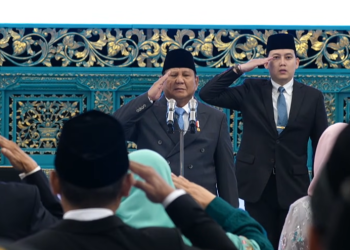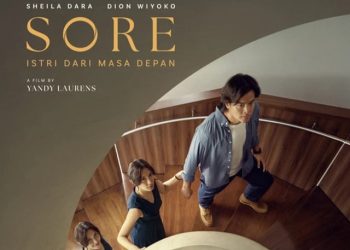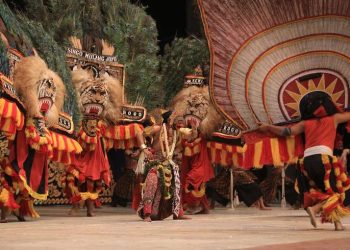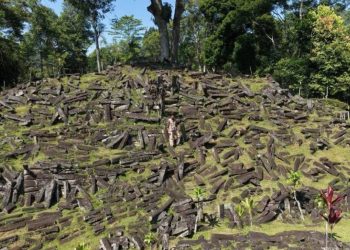Jakarta, Indonesia Sentinel – The Reog Ponorogo dance, one of Indonesia’s traditional performance arts that continues to thrive in the cultural landscape of East Java. This iconic performance art captivate its audiences with its mystique, dramatic costumes, and elaborate storytelling.
Ponorogo is widely regarded as the birthplace of Reog, a traditional dance that serves as both entertainment and a symbol of local identity. The performance is believed to have originated in the 13th century and continues to strive until today.
Origins and Legend of Reog Ponorogo
Reog Ponorogo is more than just a dance, it’s a historical narrative embedded in folklore. While there are five popular versions of its origin story, the most widely recognized tale revolves around Ki Ageng Kutu, a nobleman during the reign of King Bra Kertabumi, the last ruler of the Majapahit Empire in the 15th century.
Disillusioned by the king’s corruption in the royal court, Ki Ageng Kutu foresaw the decline of the Majapahit kingdom. In protest, he withdrew from the court and established a school where he taught martial arts, invulnerability techniques, and moral principles to young followers. His goal was to foster a generation capable of reviving the kingdom’s former glory.
Knowing that his small group of followers was no match for the royal army, Ki Ageng Kutu resorted to a form of political satire. He used the Reog dance as a medium to critique the ruling king, cleverly embedding subversive messages within the performance. The dance thus became a tool of resistance, gaining popularity among the local populace.
The Art of Reog
Today, Reog Ponorogo is performed during various celebrations, including weddings, circumcisions ceremony, and national holidays. At the heart of this centuries-old performance is the Singa Barong, a lion mask that represents the “king of the jungle.” This imposing mask, often adorned with peacock feathers arranged into a giant fan.
The dancer who bears the Singa Barong mask, which can weigh over 50 kilograms supports it using only their teeth, a feat that showcases extraordinary physical and spiritual strength.
Indonesia’s GoTo Partnership with Tencent and Alibaba Cloud to Boost Digital Infrastructure
The performance narrative now revolves around the story of King Kelono Sewondono of Ponorogo, who embarks on a quest to win the hand of Princess Dewi Ragil Kuning of Kediri. His journey is interrupted by King Singa Barong, whose army of lions and peacocks clashes with Ponorogo’s forces.
This epic battle, rich with metaphors of power and conflict, features Warok warriors wielding black magic, heightening the drama of the dance as performers often appear to enter a trance-like state.
The performance typically features five main characters, each with deep philosophical meanings reflected in their costumes, movements, and roles.
Key Characters in Reog Ponorogo
- Warok: Representing spiritual guides, Warok is derived from the word wewarah, meaning someone with a pure heart capable of offering guidance. The Warok character symbolizes the spirit of the Ponorogo people who have passed down the Reog tradition through generations.
- Jathil: This character portrays a cavalry soldier, embodying the agility and skill of ancient horsemen. Jathil dances are often performed in pairs, with minimal props, typically a woven horse and traditional warrior attire.
- Singa Barongan: The highlight of the Reog performance, Singa Barongan is a massive lion-like creature, crafted from bamboo frames, tiger skins, and a peacock feather headdress known as dadak merak. The Barongan mask, measuring about 2.5 meters in length and 2.3 meters in width, can weigh between 50 to 60 kilograms. It is believed that the performer must undergo rigorous physical and spiritual training to carry the heavy mask, with some attributing the ability to lift it to mystical forces.
- Prabu Klono Sewandono: Portrayed as a powerful king wielding a magical whip known as Kyai Pecut Samandiman, Klono Sewandono is depicted as a lively and flamboyant figure. The character’s elaborate attire includes a distinctive mask and bright clothing, showcasing the king’s supernatural prowess.
- Bujang Ganong: Also known as Ganongan, this character is the energetic, agile, and humorous young patih (minister). Bujang Ganong is known for his martial arts skills, often performing daring acrobatic stunts. He wears a distinctive mask adorned with feathers and colorful attire, similar to that of Klono Sewandono.
Preserving a Cultural Heritage Under Threat
Reog Ponorogo is not merely a form of entertainment, it is a cultural treasure that embodies the spirit, beliefs, and resilience of the Javanese people. As the world changes, efforts to preserve this art form are becoming increasingly vital, ensuring that the legacy of Reog Ponorogo continues to inspire future generations.
(Raidi/Agung)
























